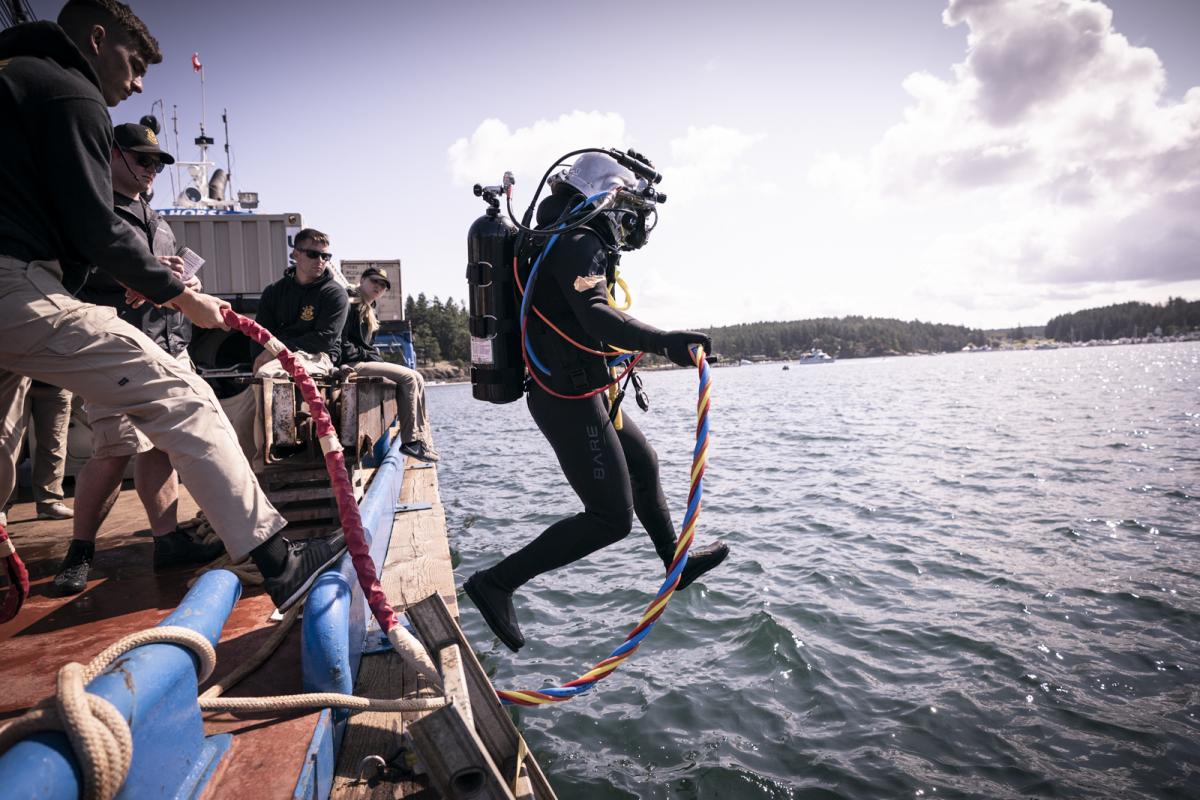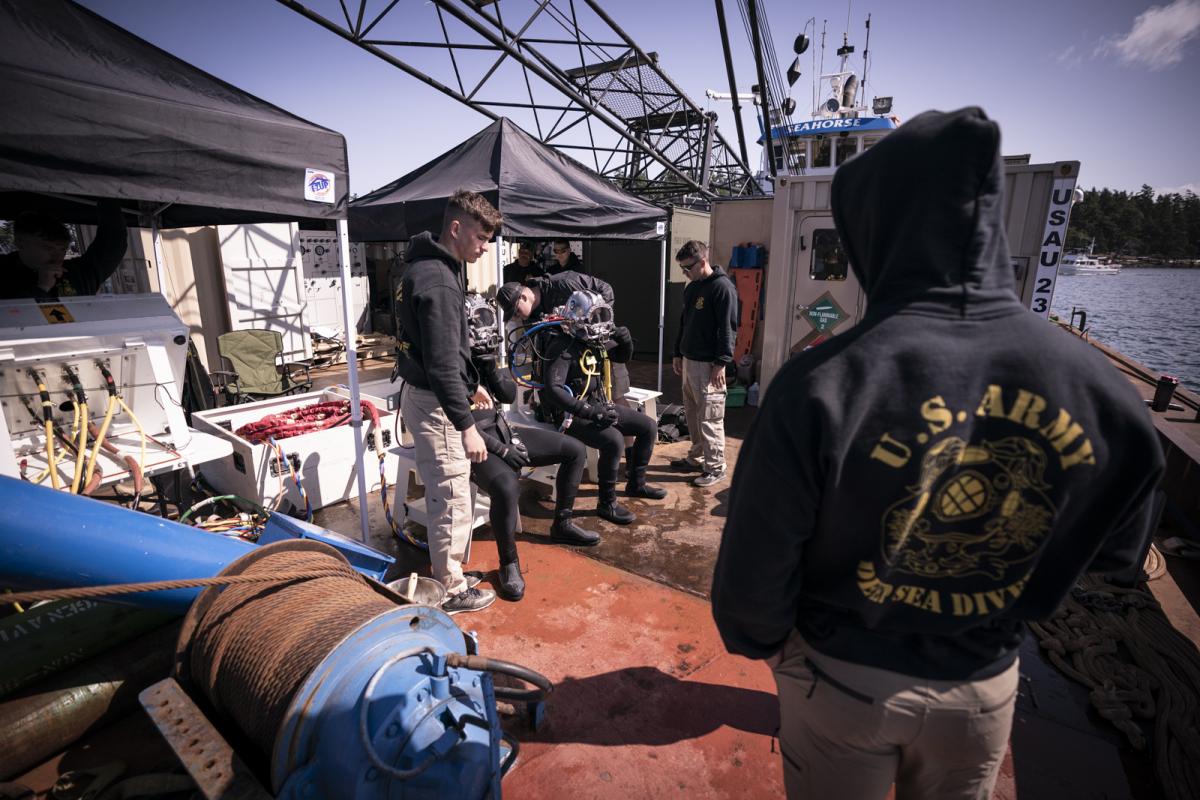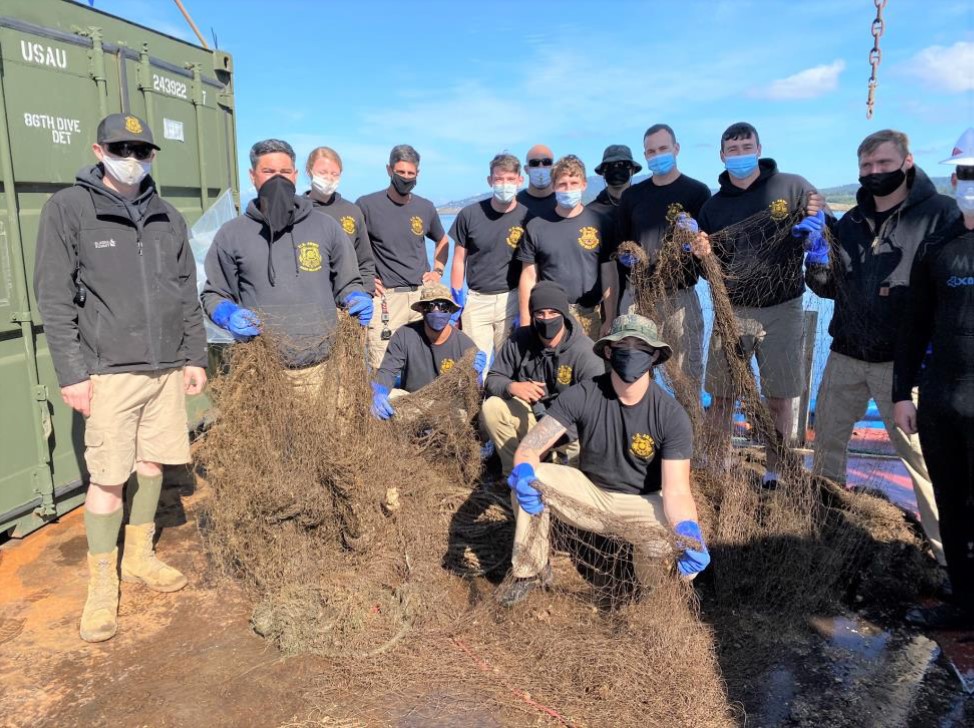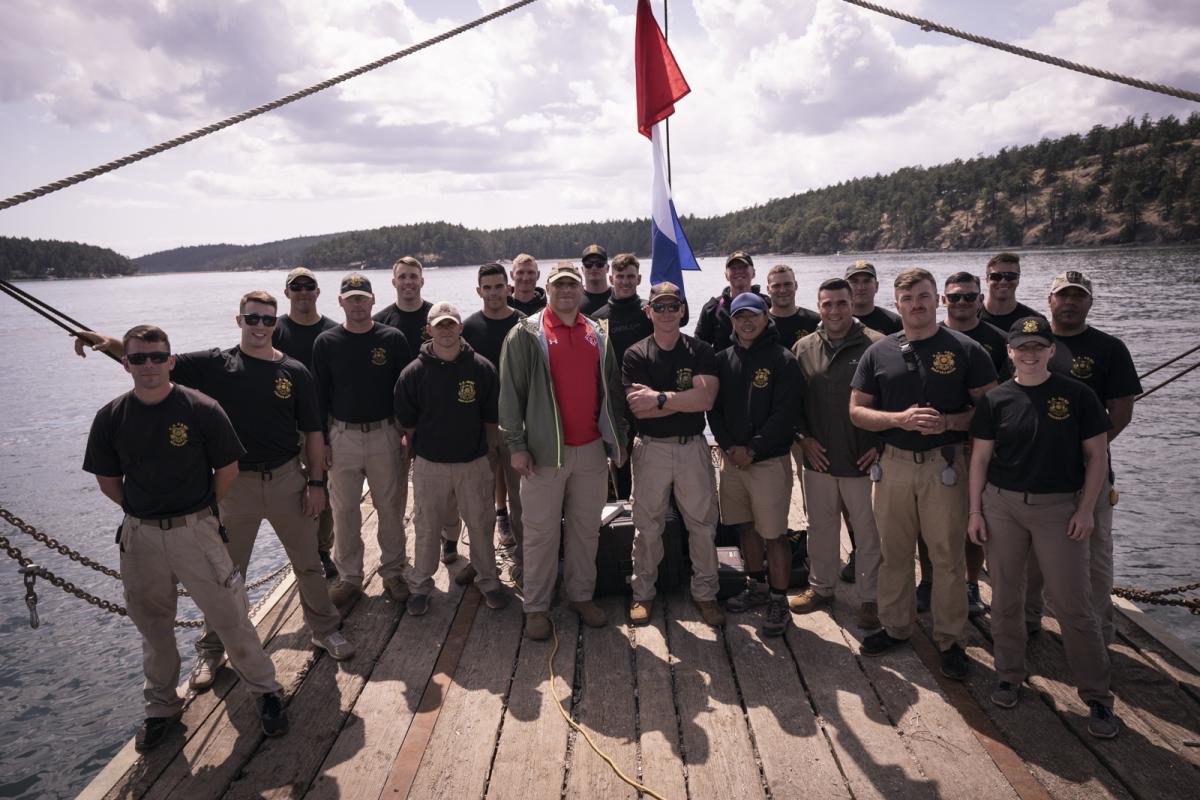Deep Water Derelict Net Removal

A diver from the Army's 569th Dive Detachment diving deep to remove derelict fishing nets in 2019. (photo credit: Greg Sweney, Motofish Images)
The Department of Natural Resources, Natural Resource Consultants (NRC), and the United States Army's 569th Dive Detachment have formed a partnership to remove derelict fishing nets from the deep waters of Puget Sound.
A successful round of removals occurred in July 2019 and a second removal effort is being planned for July 2023.
There are currently 195 known deep water derelict fishing nets located below 105 foot depths in Puget Sound. These lost nets entangle and kill marine animals and damage important marine habitats. The nets are located in such deep waters that to date they have been inaccessible and cost prohibited to remove.
The Department of Defense offers an Innovative Readiness Training Civil-Military Partnership that provides a unique opportunity for communities to utilize the expertise of the military at no cost while the soldiers receive important training opportunities.

Diver's from the Army's 569th Dive Detachment preparing to locate and remove derelict fishing nets.
(photo credit: Greg Sweney, Motofish Images)
This partnership allows the Army Engineer Dive Detachment a chance to train in the dynamic Puget Sound waters while removing the damaging derelict nets. Removing these nets will remove the immediate threat of entanglement to marine species. These deep water habitats are home to over 90 species of bottomfish. These include cod, hake, pollock, sole, sculpin, shark, perch, and rockfish. Two species of rockfish are listed under the federal Endangered Species Act.
1,444 shallow water derelict nets have been removed from Whatcom County waters since 2002. These nets were damaging important rock reef habitat. In these nets, 157 dead birds, 6 dead mammals and 1,784 alive and dead fish were observed entangled. Most of these nets were lost years ago, during a time gillnet fishing was at its peak.
Currently, it is estimated that from 15-30 gillnets are lost annually. Commercial fishermen are required to report lost nets and the state and Tribes support a Reporting, Response, and Retrieval program designed to ensure any newly lost nets do not re-accumulate in marine habitats.
July 2023
The 86th Engineer Detachment Army divers and Natural Resource Consultants will be leading the removal efforts with a focus on an abundance of nets that were surveyed along Point Roberts Reef in Northern Whatcom County. The removal efforts will occur between July 6, 2020 and July 25, 2023. You can expect to see a large contracted vessel mobilizing to the site the first week of July.

Map of project location
Protocols are in place to complete the removal effort in the most environmentally conscious way and to cause no impacts to species. The derelict net removal dive team will remove nets by hand to minimize impact to the rocky reef habitats. To ensure the project does not affect the Southern Resident Killer Whales, the project will follow the guidelines on the whale wise website at all times. During diving operations, the vessel engines will be turned off. NRC staff will be on board documenting the size and type of derelict nets removed as well as the species found entangled in the nets.

Army's 569th Dive Detachment on the Seahorse during the 2019 removal project. (photo credit: Greg Sweney, Motofish Images)
Currently, it is estimated that from 15-30 gillnets are lost annually. Commercial fishermen are required to report lost nets and the state and Tribes support a Reporting, Response, and Retrieval program designed to ensure any newly lost nets do not re-accumulate in marine habitat.

Army's 86th Engineer Dive Detachment
July 2020 Project Accomplishments
Divers from the 86th Army Engineer Dive Detachment were able to investigate and remove nets from 24 targets along the southern shores of San Juan Island during 10 dive days between July 6 and July 22, 2020. A total of 5 nets and 2 purse seine lines were removed, restoring 0.31 acres of rocky reef habitat. Three of the five removed nets contained dead or living animals. Five of the seven nets contained dead or living animals. Natural Resource Consultants found a rockfish, crab, mussels, lingcod, unidentifiable fish, barnacles, and scallops within the nets. Natural Resource Consultants estimate that removal of these nets is protecting over 100 fish from entanglement mortality over the next five years

Diver’s from the Army’s 86th Engineer Dive Detachment along side a newly removed gill net in 2020 (photo credit: Joan Drinkwin, NRC)
July 2019 Project Accomplishments
Divers from the 569th Army Engineer Detachment were able to investigate and remove nets from 31 targets along the southern shores of San Juan Island during 10 dive days between July 8 and July 24, 2019. A total of 7 nets were removed, restoring 0.28 acres of rocky reef habitat. Five of the seven nets contained dead or living animals. Natural Resource Consultants estimate that removal of these nets is protecting over 100 fish from entanglement mortality over the next five years. Click here to see a video of the divers removing a net.

Many thanks to the Army's 569th Engineer Dive Detachment team for helping cleanup Puget Sound (photo credit: Greg Sweney, Motofish Images)

